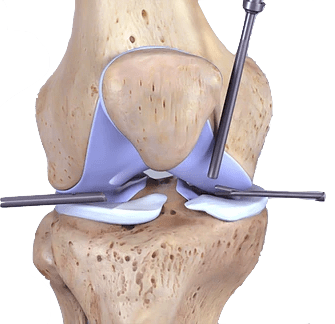Knee Arthroscopy
What is a Knee Arthroscopy?
Arthroscopy is a surgical procedure in which an arthroscope (camera) is inserted into a joint.
An arthroscope is a device that your doctor uses to see inside your knee joint. It includes a tiny camera at its tip, this allows direct visualization of all parts of the knee and also allows surgical procedures to be performed by minimally invasive ‘keyhole’ surgery.
Where required, additional surgical instruments can be inserted through the arthroscope or through additional small incisions in your knee. This can allow a range of other surgical actions.
The arthroscope (a long thin camera) allows the surgeon to view the inside of the joint or body part, and combines with a variety of devices that allow the surgeon to cut away, move, correct or remove are element that is causing problems or pain.
Some arthroscopic surgical procedures can be performed on an outpatient basis. This means patients can return home the same day of the procedure.
Why Have an Arthroscopy of the Knee Joint
The camera offers an image of the inside of your knee and can help the doctor evaluate and treat a range of knee disorders including:
- Torn Floating Cartilage (meniscus): The cartilage is trimmed to a stable rim or occasionally repaired
- Torn Surface (articular) Cartilage (Cartilage Tears)
- Removal of Loose Bodies (cartilage or bone that has broken off) and Cysts
- Reconstruction of the Anterior Cruciate Ligament
- Patellofemoral (knee-cap) Disorders
- Washout of Infected and Swollen Knees
- General Diagnostic Purposes



